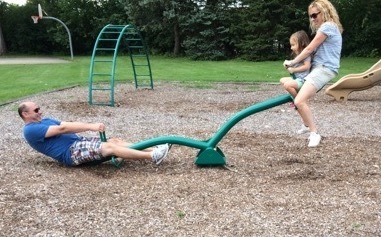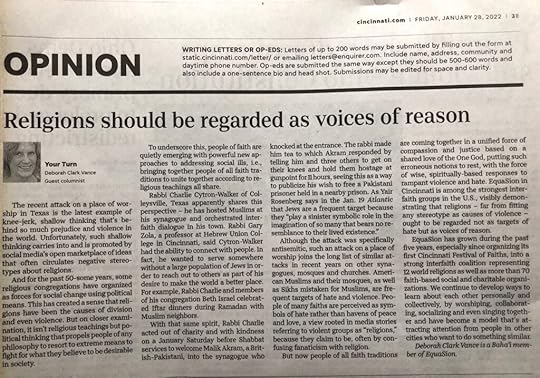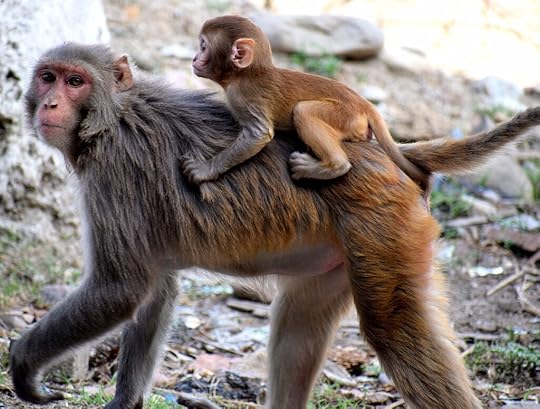Deborah Clark Vance's Blog
April 17, 2023
From Crop Failure to a Harvest of Friendship
When we lived in a house with its own yard, I reigned. But when we downsized to a condo townhouse, I only ruled a patio and had access to the homeowners association’s modest garden plot that had lain fallow for years under layers of nearly indestructible hardwood chips.
Since no one else was interested, the entire garden space became mine. I raked out eight bushels of those chips and shoveled in composted manure, creating a soil that any vegetable would be pleased to sink its roots into. Because the soil rescue work had been so taxing, I planted easy-to grow lettuce, basil, beans, arugula, zinnias and marigolds. Although deer and rabbits threatened my little plot, come fall I did a victory lap around it. After putting it to bed, I spent winter enjoying next year’s garden, planted in my mind.
Then Cheryl moved in next door. Having heard she should consult me about the garden space, she introduced herself. Over tea, I learned that divorce had delivered her here, and sympathized with her having to relinquish a huge house on several acres with its big cutting garden. I hoped to swap gardening techniques.
“How long have you been gardening?” I asked.
“Are you kidding? I hired people for that!” I was getting the picture: Tennis, horseback riding. Cartier watch.
“So, what did your hired hands create?”
“Nicely shaped boxwoods — I hate when they’re uneven! Rows of lavender. Snapdragons. Nothing red — I hate red flowers!”
Well, I said, she shouldn’t have trouble with this little space, and I’d help whenever. And mentally adjusting my vision, I said to go ahead and use the sunny northeast quadrant. Cheryl settled into her single life, cobbling together an income by selling specialty foods to small markets. And because she loved inventing simple elegant meals and cooking for friends, she wanted to teach people how to plan easy fancy dinner parties.
When our different schedules allowed, we’d walk to the shopping district. Passing by a row of white-blossomed Bradford pears, Cheryl said, “So pretty! What are they?”
“You mean, “ I teased, “those invasive trees that smell like dead fish? I can’t believe you like them but hate red flowers!”

Occasionally I’d offer to help her start her garden instead of taking our walk, but she usually produced reasons not to. Still, she assured me she knew what to do and not to worry about her, so I didn’t. Until I did.
In spring, I left tools on my patio for her, stressing that she mustn’t ever dig in wet soil. One day, she reported that after it rained, she’d worked her plot. I heaved a deep sigh. But after a lifetime of teaching my children to restrain themselves before destructively plowing ahead, I’d learned to detach from thinking I could control anyone besides myself.
The next day I saw the fruits of her labor. Digging in wet soil compacts it, keeping air and water from penetrating, and because soil here is clay loam, it practically turns to concrete when it dries. Sure enough, big hard clay balls lay throughout her plat. Cheryl had blithely scattered radish, bean, corn and cosmos seeds helter-skelter onto the lumpy surface, then left town for one of the many business trips she’d take during the growing season. As she prepared to go out of town, she thoughtfully gifted me the fresh produce from her fridge and her store-bought flower bouquets.
It was still early enough not to throw in the trowel, so I added her quadrant to my list of garden tasks. I lamented about all my work resurrecting this space, only now to be picking up hardened clay balls and breaking them, or tossing them into the compost. It was clear Cheryl loved the idea of gardening but not the actual work. I, on the contrary, am used to the heartache that gardening entails – dashed hopes, tattered dreams, results that never matched the bountiful harvests I’d imagined. I reaped her puny misshapen radishes for her, predicting she wouldn’t eat them. But at least she’d learned to contribute them to the compost.
During spring I shared my different lettuce varieties with her. In September, she used the green beans and tomatoes I gave her and cooked me a simple, delicious dish she’d learned from a local chef .
Had we not been neighbors, I doubt Cheryl’s and my paths would have crossed. She spends evenings in bars, obsesses over appearances, name-drops and says she knows she’s a snob –- none of which describe me. But no matter how much we disagree, I admire her enthusiasm, sense of humor and compete honesty.
Determined for the gardening bug to bite her and help ground her a little, I gave her some cherry tomato plants plus divisions of my oregano and thyme plants to grow in the space outside her front door. Days later when bringing me an armful of fragrant lilies, she said, “You’ll be proud of me!” and showed me how she’d planted my offerings. “Please water them while I’m away.”
In October, I taught her how to collect seeds from flowering annuals, which she continues to do with magenta spider flowers and pink cosmos. She lets her cherry tomatoes reseed themselves each year. And she doesn’t need to remove her expensive jewelry to do this.
Now she’s rented out her unit and bought another condo out-of-state where she teaches clients to host easy fancy dinners. We share text messages, phone calls and photos and when she’s in town we enjoy a Sunday brunch listening to jazz at our favorite café. I freeze beans from my garden to use during winter to make her dish. And just as I taught her, she continues to harvest flower seeds to sprinkle wherever she travels.

Have you read SYLVIE DENIED yet? I invite you to grab your copy, and please leave an honest review when you do.you do.
November 17, 2022
Is It Time for Humanity to Return to Kindergarten?
I began this blog to herald my novel “Sylvie Denied.” As it turned out, the debut happened during a pandemic that caused nearly total sequestering with bookstores closed, book fairs cancelled, library talks non-existent. As we emerged from that period into a changed culture, we in the US had to deal with extreme politics that threatened the nature of governance itself. And there’s now a sense of being veterans from a battle against foes with nebulous outlines, and we now exist within an altered collective consciousness.
“Sylvie Denied” deals with individual vs. collective thought. Its viewpoint is that of a girl growing to womanhood who measures her own thought against society’s. While trying to understand herself and her place in the world, she finds that anyone, anywhere might buy into a toxic collective consciousness.
The power of collective consciousness, or collective thought, is a topic I focused on in my teaching of media and intercultural communication courses, both of which deal with shared beliefs and behaviors. Marketers and politicians draw from these fields while preparing messages to pummel ever more fragmented audiences by adding to the peer pressure born of collective thought.

Collective thought has always existed. You may know it as cultural values, society’s sayings, paths to success, following the crowd, how to conform, “go ahead and eat the apple,” etc. Why is this a problem? Because our combined thoughts create a collective worldview. And that worldview is increasingly based on our material pursuits while omitting anything reeking of the spiritual, like what’s best for the world and what values would help get us there.
Fortunately, in the past five years I’ve witnessed a growing spiritual awakening. Groups are emerging whose members realize the need to relate more authentically, examining how we’d prefer to experience life, improve the world, and address such issues as pollution, inequality, war, poverty, and racism without getting into a screaming match. Perhaps we should try to relate with each other as we did in Kindergarten, before our brainwashing had gone too far, by finding what we have in common and learning how to share. Above all, we need to see each other as fully human rather than embodiments of annoying slogans.

Have you read SYLVIE DENIED yet? I invite you to grab your copy, and please leave an honest review when you do.you do.
June 11, 2022
Can You Learn about Different Cultures by Watching Movies?
For a while, I was fine with the flicks that Netflix was 95-98% certain.I’d like They were wrong too often. So I decided to start selecting random films, including ones predicted to disappoint me.
After I watched “My Best Friend Anne Frank” and gave it a high rating, Netflix started presenting me with Holocaust films. Thumbs up to the “The Zookeeper’s Wife” and a documentary featuring German women who worked at Dachau during WWII. “3000 Nights,” was difficult but good — about a Palestinian woman who’s falsely accused and winds up in an Israeli high security women’s prison. And there was “Omar” a Palestinian man who scales the wall to court Nadia. He’s falsely accused of a terrorist act in Israel, goes to prison where he’s tortured. Will he see Nadia again?
“Ava Maria”, a surprise comedy, is a short Oscar-nominated film about orthodox Israeli settlers who crash their car outside a Palestinian convent. This happens on Shabbat and at a time when the nuns are observing a vow of silence. Another comedy, “Ali’s Wedding” , is based on the life of the star and screenwriter, an Iraqi living in Melbourne, Australia. It was fun seeing what other cultures find funny.

Some films were onerous.
The Moroccan “The Unknown Saint” started off funny. A robber looks for a desolate place to bury loot, driving into the barren wilderness until he runs out of gas near a hill topped by a scrawny tree. He climbs the hill, buries the loot, mounds up the soil and places rocks around it so it looks like a gravesite. The cops catch up and take him to prison. Fast forward to when he emerges years later. The tree has grown and the site now includes a shrine for the “unknown saint.” A town has bloomed and businesses have sprouted, selling souvenirs, I was filled with expectations. But the film droned on and on with long silences, dull subplots, inane exchanges until I quit. Don’t know if he got his loot.
A depressing film was about a depressed Iraqi single mother struggles with shortages of necessities and sets off to find gas for her stove. It seems like the film wants viewers to experience all the details of her getting lost, running out of gas, being shot at, sleeping on the ground, and walking and walking, knowing her son has gone home to an empty apartment. I curse the US decision to invade Iraq.
Another grim film featured a worn-out Afghan woman who’s surprised when her husband marries a second wife the same age as his high-school age daughter who has plans to continue her education. The husband is clearly a jerk, shows favoritism to the bride and neglects and abuses his first wife and their three children. Afghanistan doesn’t look better off either.
But talk about dragging! “Dear Son” takes the cake. We observe a middle-age Tunisian couple tenderly doting on their teenage son who is set to go off to university. We see long scenes of them eating breakfast, putting food in the cart at the supermarket, walking down streets. Has the filmmaker never heard of editing? Then when the father goes to look for the son who’s run off to Syria to join ISIS, we watch him stand in line at the station, sit on the train, at the Turkish border, meet the smuggler who’ll take him to Syria, and walk in the wilderness. At least I saw in detail what life is like over there.
The good thing is that seeing these films has brought these people andn places to life. And even the bad ones let you experience the universality of human struggles.

Have you read SYLVIE DENIED yet? I invite you to grab your copy, and please leave an honest review when you do.you do.
April 2, 2022
Do You Know How Your Logic Makes Your Decision-making Tick?
Danielle, who cuts my hair, is tall, thin, gorgeous and used to work as a fashion model in New York City. In fact, because she looked the part, many in her life assumed that’s where she belonged which made modeling seem to her like a logical choice. But she’s much more than her body and has many other interests including art, living sustainably and the desire to raise kids in the Midwest where she grew up. Now she’s married, raising two girls and growing organic veggies on every available space in her yards and on her porches. Plus she gives great haircuts and is not into small talk.
This final virtue makes my hair appointments thought-provoking and propels our conversations into provocative territory, like the story of her dad who was less than monogamous and provided her with more siblings than I have relatives. And like telling me she’s grateful that during her twenties she saw a shrink who taught her to painstakingly observe each step of the logic she used in decision-making.
I missed that boat and shouldn’t have. But I kept journals and occasionally scrutinized them for patterns and explanations about what made me tick and what led to my life’s many negative consequences.
I wrote about this process in Sylvie Denied so you can follow Sylvie’s train of thought through her early childhood, adolescence and young adulthood. Events large and small that impress her as a child assume perhaps an outsized place in her thinking. Although some of these impressions make rather shaky premises, she follows where her mental map leads and she acts according to the logic based on those premises. I wanted to show how Sylvie’s experiences — coupled with misunderstandings and overshadowed by her personality — set the foundations for decision-making that leads to choices, both good and bad.

Understanding our own personal reasoning process is priceless. Recognizing the premises we build on is even more important. We grow up in families that speak a particular language in neighborhoods where many values are shared, all of which contributes to how we perceive the world.
Probably most of us reminisce, often with regrets. And many of us beat ourselves up for bad choices. But while we’re conscious, we can change our thinking. Since the world has just experienced the Covid phenomenon together, I think there’s increased scrutiny now on choices we’ve made collectively — how we organize ourselves, the leadership we choose and why things are the way they are. I hope this means that there’s also more interest in digging deep into our basic beliefs, including those about life itself.

Have you read SYLVIE DENIED yet? I invite you to grab your copy, and please leave an honest review when you do.
February 26, 2022
How Can We Ever Know What’s Really Happening in the World?
My novel Sylvie Denied is set at a pivotal moment when lively discourses occurred on still unsettled issues — the war machine, women’s rights, racial oppression, environmental pollution and incivility. Why has the needle budged so little? The lack of media literacy. The culprit is that our news system is based on corporate commercial funding.
When Television went on air after World War Two, programs in the 1950s were supported by individual sponsors as radio had been since the 1920s. Citizens had lobbied Congress to regulate radio commercials and lobbied them again to regulate TV. Congress responded both times. TV news regulation was a series of laws collectively known as the fairness doctrine. Far-right Republicans objected to the regulations and launched a campaign accusing broadcasting — without any actual research — of being liberal. A charge that has persisted. Without evidence.
As the Vietnam war ended and viewers no longer sought the latest updates, newscasts found other ways to attract them. Enter hyper-sensationalism and “happy talk” which marketed its newscasters as visiting friends. And, frankly, it was weird seeing them smile right before and after reporting stories involving tragic death.
There’s rising concern throughout the world about media literacy, partly because of misinformation and propaganda on social media. The BBC instituted a “disinformation unit” to fact-checks stories. Bulgaria produces a European Media Literacy Index that ranks Finland, Denmark, Estonia, Sweden and Ireland as the five most media literate among thirty-five countries, based on a number of measures. In Media Literacy Now’s index of forty-five countries ranks the US #15, behind Canada (#4) and the UK (#12). They also found the US #23 in press freedom, #478 in math literacy, #502 in science literacy. Such low scores in math and science literacy confirm my suspicion that U.S. journalists aren’t asking hard questions about science information and don’t know how to interpret statistics. One of the most worrisome measures, the US is high (#5) in “trust in others” suggesting that we might too easily accept sources’ statements. If the public learned to factor in the money exchange that influences news content, media outlets would have to be more careful in their reporting.
 TV Antenna in Amazon Rainforest
TV Antenna in Amazon RainforestI’ve experienced these developments as somewhat of a participant as well as a scholarly observer and taught about it for twenty years. Many of my students said they wished they’d learned in grade school how story-telling techniques and marketing influences how we see reality. Others said they’d shared something they’d learned in my classes with their parents who replied, “Sounds like she’s a Communist.”
Educators are getting the message that media literacy needs to start in grade school. According to a Media Literacy Now report, one state requires media literacy in high school, eight states have added it to their curricula and three have written new standards. I hope the results are worth the wait.
How can we ever know what’s really happening in the world?
My novel Sylvie Denied is set at a pivotal moment when lively discourses occurred on still unsettled issues — the war machine, women’s rights, racial oppression, environmental pollution and incivility. Why has the needle budged so little? The lack of media literacy. The culprit is that our news system is based on corporate commercial funding.
Television arose just after World War Two and an exhausted population just wanted to relax and have fun. TV programs in the 1950s were supported by individual sponsors as radio had done since the 1920s. Citizens lobbied Congress to regulate radio commercials and later to regulate TV and Congress responded both times. TV news regulation was a series of laws collectively known as the fairness doctrine. Far-right Republicans objected to the regulations and the became particularly politicized during the 1960s.
As the Vietnam war ended and viewers no longer sought the latest updates, newscasts found other ways to attract them. Enter hyper-sensationalism and “happy talk” which marketed its newscasters as visiting friends. And, frankly, it was weird seeing them smile right before and after reporting stories involving tragic death.
There’s rising concern throughout the world about media literacy, partly because of misinformation and propaganda on social media. The BBC instituted a “disinformation unit” to fact-checks stories. Bulgaria produces a European Media Literacy Index that ranks Finland, Denmark, Estonia, Sweden and Ireland as the five most media literate among thirty-five countries, based on a number of measures. In Media Literacy Now’s index of forty-five countries ranks the US #15, behind Canada (#4) and the UK (#12). They also found the US #23 in press freedom, #478 in math literacy, #502 in science literacy. Such low scores in math and science literacy confirm my suspicion that U.S. journalists aren’t asking hard questions about science information and don’t know how to interpret statistics. One of the most worrisome measures, the US is high (#5) in “trust in others” suggesting that we might too easily accept sources’ statements. If the public learned to factor in the money exchange that influences news content, media outlets would have to be more careful in their reporting.
I’ve experienced these developments as somewhat of a participant as well as a scholarly observer and taught about it for twenty years. Many of my students said they wished they’d learned in grade school how story-telling techniques and marketing influences how we see reality. Others said they’d shared something they’d learned in my classes with their parents who replied, “Sounds like she’s a Communist.”
Educators are getting the message that media literacy needs to start in grade school. According to a Media Literacy Now report, one state requires media literacy in high school, eight states have added it to their curricula and three have written new standards. I expect the results to be worth the wait.

Have you read SYLVIE DENIED yet? I invite you to grab your copy, and please leave an honest review when you do.
February 5, 2022
Religion as the Voice of Reason
I sent the following essay to the local paper who published it a week later:
The recent attack on a place of worship last weekend is the latest example of knee-jerk, shallow thinking that’s behind so much prejudice and violence in the world. Unfortunately, such shallow thinking carries into and is promoted by social media’s open marketplace of ideas that often circulates negative stereotypes about religions.
And for the past 50-some years, some religious congregations have organized as forces for social change using political means. This has created a sense that religions have been the causes of division and even violence. But on closer examination, it isn’t religious teachings but political thinking that propels people of any philosophy to resort to extreme means to fight for what they believe to be desirable in society.
To underscore this, people of faith are quietly emerging with powerful new approaches to addressing social ills, i.e., bringing together people of all faith traditions to unite together according to religious teachings all share.

Rabbi Charlie Cytron-Walker of Colleysville, Texas apparently shares this perspective—he has hosted Muslims at his synagogue and orchestrated interfaith dialogue in his town. Rabbi Gary Zola, a professor at Hebrew Union College in Cincinnati, said Cytron-Walker had the ability to connect with people. In fact, he wanted to serve somewhere without a large population of Jews in order to reach out to others as part of his desire to make the world a better place. For example, Rabbi Charlie and members of his congregation Beth Israel celebrated Iftar dinners during Ramadan with Muslim neighbors.
With that same spirit, Rabbi Charlie acted out of charity and with kindness on a January Saturday before Shabbat services to welcome Malik Akram, a British-Pakistani, into the synagogue who knocked at the entrance. The Rabbi made him tea to which Akram responded by telling him and three others to get on their knees and hold them hostage at gun-point for 11 hours, seeing this as a way to publicize his wish to free a Pakistani prisoner held in a near-by prison. As Yair Rosenberg says in the Jan. 19, 2022 Atlantic that Jews are a frequent target because they “play a sinister symbolic role in the imagination of so many that bears no resemblance to their lived existence.”
Although the attack was specifically anti-Semitic, such a violent attack on a place of worship joins the long list of similar attacks in recent years on other synagogues as well mosques and churches, Similarly, American Muslims and their mosques, as well as Sikhs mistaken for Muslims, are frequent targets of hate and violence. People of many faiths are perceived as symbols of hate rather than havens of peace and love, a view rooted in media stories referring to violent groups as “religions”, because they claim to be, often by confusing fanaticism with religion. Indeed, a criticism often hurled at religions is that they’ve long been the cause of conflict that inspires war, a notion that relies on a superficial view of religion. Such shallow thinking extends even into the U.S. Congress where Ilhan Omar is continually vilified because of her Islamic faith.
But now people of all faith traditions are coming together in a unified force of compassion and justice based on a shared love of the One God, putting such erroneous notions to rest, with the force of wise, spiritually-based responses to rampant violence and hate. EquaSion in Cincinnati is among the strongest interfaith groups in the US, visibly demonstrating that religions — far from fitting any stereotype as causes of violence — ought to be regarded not as targets of hate but as voices of reason. EquaSion has grown during the past five years, especially since organizing its first Cincinnati Festival of Faiths, into a strong interfaith coalition representing twelve world religions as well as more than seventy faith-based social and charitable organizations. We continue to develop ways to learn about each other personally and collectively, by worshipping, collaborating, socializing and even singing together and have become a model that’s attracting attention from people in other cities who want to do something similar.

Have you read SYLVIE DENIED yet? I invite you to grab your copy, and please leave an honest review when you do.
December 18, 2021
How Crazy Would Life Be Without Leash Laws?
When my mom was a kid, the family dog Spot would accompany my grandfather on the El on the forty-minute ride to the Chicago Loop. When Grampa got off, he’d ask the conductor to let Spot ride all the way back and drop him at the last stop. In the old televised “Our Gang Comedy” movies, you’d see dogs like Spot that chased after cars and sunk their teeth into the thin rubber tires. Spot did that too, and got his teeth stuck in a tire and spun around a few times before getting unstuck.
Dogs still ran free when I was a kid, which is how a neighborhood dog roamed over and jumped our back fence – two different times – to mate with our dog. Residents got tired of stray dogs jumping into yards, pooping on their lawns and running in packs, so leash laws were born. They were such a new phenomenon that things like the following could happen: A woman on a walk used a plastic baggy to pick up after her dog and put it inside an old purse slung over her shoulder. She reported to the police that some guy running past her snatched the purse and added, “I’d like to have seen his face when he opened it!”
Leash laws might have eliminated an inter-species war that started in rural India when a pack of dogs killed a baby monkey. Obviously, monkeys think their babies are as cute as we do and launched a war on dogs. They proceeded to kidnap 250 puppies, carry them to tall buildings, cliffs and trees and drop them to their deaths. And because people think puppies are cute, villagers in Majalgaon tried to liberate them which made the monkeys target people next. Some men even fell – were pushed? – from tall buildings while trying to save puppies. One broke his leg rescuing his screaming puppy in the process of being carried off by a monkey. As this animal war raged, villagers asked for help from the forest department who, after a day of trying, were unable to capture any monkeys.
 Photo by
Rajesh Balouria
from
Pexels
Photo by
Rajesh Balouria
from
Pexels
In nearby Lavool, in a week-long rampage monkeys finished massacring dogs and started going after children walking to school. Something similar had occured in Karnataka earlier in the fall, when villagers contacted the forest department to capture a monkey seen roaming school premises. This monkey was captured and transported to the Balur forest, about fourteen miles away. But it jumped onto the back of a passing truck and hitched a ride back to the village. It was later re-captured and taken deeper into the forest.
Researchers of monkeys say they’re known to be vengeful. But these incidents seem more tactical than mere revenge. They might be protests against human dominance. How better to get back at humans than attack their hearts? People love puppies and some of the kidnapped ones were their beloved pets. Even more beloved are children who were next on the monkeys’ hit list.
On the most popular animals top ten list, monkeys are number ten, dogs are number one and children are in a whole different class. In other words, this monkey business is not going to boost monkey popularity. They should know better than to mess with humans who are way better at starting stupid wars than monkeys are.

Have you read SYLVIE DENIED yet? I invite you to grab your copy, and please leave an honest review when you do.
November 18, 2021
When Did Our Cars Become Fashion Accessories?
Friends and family love making fun of my car. They just can’t believe I prefer what it has: hand-cranked windows, manual door locks, good mileage for a gas-powered car (36 city, 44 highway), a radio with a CD player and an engine that won’t quit.
Car aesthetics have never concerned me: I’d never worried about scratches and dents, figuring that the worse it looks, the less likely it’d be a target if I parked in rough parts of town. But I finally bit the bullet and had it painted before the rust in the roof grew into actual holes. It looked so good that when I took it in for an oil change the other day, one of the mechanics exclaimed over the paint job. Though it was repainted the same color blue, he noticed it has the little sparkle in the paint, something I hadn’t detected.
Ron, the shop owner, also has a 2004 Honda Civic with around 250K miles on it. He once told me about a woman who’d been in an accident with the same car. Hers had at least 250K miles and, of course, insurance wanted to total it. But she fought them by proving her car should run for another 100K, so they paid for repairs.
I was considering buying an electric car, but news of the current microchip shortage has dissuaded me. And with car production down, car parts are in high demand and thieves are out harvesting them. Ron said there’d been a rash of catalytic converter thefts on his lot – $15K worth – and that he’d gotten an exorbitant bid for a fence. What about car thefts, I wondered? He said I needn’t worry because with the scarcity of new cars and old parts, insurance companies are paying what it’d cost to buy a comparable new car. Besides, Ron said thieves don’t want to mess with the Honda because a computer chip in the key shuts down if you try to start it without.

When our parents were alive and my siblings and I were younger, they’d pass along their old cars when they bought new ones. The one my mom handed me had an ignition that, before long I could start with a screwdriver. The benefit was that I could leave it running on a cold day, lock it, do a quick errand and return to warmth. The stodgy-looking car my brother inherited was comfy and drove well. The mess inside wasn’t his fault because someone(s) broke in and ripped off the door handle on the passengers’ side and the doors’ upholstery (in vain, if they were looking for drugs – he doesn’t even drink!). And somehow the vinyl all along the dashboard buckled so he held it down with a row of vice clamps.
As for me, my new problem is worrying about nicks and scratches on my glittery paint — I have an image to maintain.

Have you read SYLVIE DENIED yet? I invite you to grab your copy, and please leave an honest review when you do.
October 16, 2021
Was Your Courtship Full of Miscommunication?
It took them a very long time to warm up to each other. For one thing Moe is much older and closer to the end of his life. The other thing is that she’s ten pounds heavier than he is. He has a history of being fussy — he rejected the previous choice of others who tried setting him up. No one could predict how he’d react to her, but the first time they had a meal together, she ate with her mouth open and made smacking noises, which you’d imagine would to be a turn-off for Moe.
When I first saw them, she was on her way to Moe’s place. It was poignant watching her make her way towards him. She moved quite slowly, taking her time, in what seemed like forever. She’s a very big girl, which was apparent when I saw her next to him. She made attempts to be friendly, but he seemed totally disinterested. I went off on some errands and when I passed their way again, she was leaving. I later heard that she’d huffed at him and took off after he’d stuck out his tongue.
Time went on and after a long and painfully slow courtship, she got pregnant. Because of Moe’s circumstances, she was vigilantly cared for during those ten months, even during the baby’s birth which, incredibly, she accomplished while hanging upside down. But despite all the care and superhuman efforts, the infant was still-born. While she convalesced alone, Moe took off into a woodsy area for time alone.
Besides the grieving of its parents, the baby’s death was a shame because of Moe’s rare genetics. He was orphaned in the wild and raised in the zoo community. The Linne’s two-toed sloth isn’t endangered but its natural habitat is vulnerable to human encroachment. Sloths spend most of their time hanging upside down by their four-inch long, curved claws. They sleep, eat, mate, and even give birth in this position and only climb down to the ground once a week to go to relieve themselves.

I heard no reports about her emotional state. This couple is strangely adorable which increases my sympathy for them. Maybe in a few years Lightning will get pregnant again, if Moe can last that long.

Have you read SYLVIE DENIED yet? I invite you to grab your copy, and please leave an honest review when you do.
September 18, 2021
Can We All Please Give Insects a Break?
You may fear them, you may hate them, but we really can’t live without them. So we need to try harder to give insects a break. Maybe the warnings about an insect apocalypse were overblown, but still, there’s a problem. All you have to do is observe, especially if you’re old enough to remember.
Here’s how it used to be decades ago. Every night in areas I lived in, whether in the Midwest, the Northeast or the Mid-Atlantic, fireflies and ladybugs were everywhere. So were butterflies, in so many species that as a kid I bought a little book for identifying them. Now I’m lucky if I see a handful in the summer – a couple of monarchs, maybe some swallowtails and a fritillary. And of course, there’s also concern about bees, especially honeybees that pollinate so many of our favorite fruit and nut trees.
Any time you drove anywhere, your windshield would be bombarded with insects that you had to keep turning on the wipers. I knew a girl in college who was so concerned about her complicity in so many deaths that it precipitated a nervous breakdown. She’d quit driving altogether for months before that, but no one saw that as a warning sign. I wonder how she’d react to today’s situation.
Now it’s a big deal to see an unusual insect. My husband was startled one night by a rhinoceros beetle that hissed at him. And for the first time since my childhood, last week I saw a walking stick, a species that demands our admiration since the females can lay fertilized eggs without the use of a male.

This summer I saw a butterfly — I think it was a fritillary — floating in the pool, and scooped it out gently and laid it motionless on the deck near the ladder. After swimming past it five times during my laps, I saw that it had picked itself up, and was standing up with its wings pressed together and vertical. During my twentieth lap, it flew off.
Unfortunately, there are still too many mosquitoes, but I’d be concerned about killing them off, or altering them genetically as Bill Gates is keen on doing.
As go the insects, so go the birds. Etymologist Doug Tallamy warns that bird species that depend on insects lost nearly three billion individuals. Another study says the bird population is down forty-five percent. It’s estimated that all monarchs will be gone in fifty years, so it’s heartening to see individuals and municipalities planting milkweed for the monarchs whose population has declined by eighty percent in the past couple decades. Still, scientists warn that water and land ecosystems will collapse with the demise of the insects.
It’s all in our control — reasons for insect decline include loss of habitats due to development, chronic exposure to insecticides and climate change which is related to human use of carbon products. We can do simple things like growing plants — even in flower pots by the front door – that attract pollinators, using alternatives –like white vinegar– to killing weeds, replacing lawns with pollinator gardens. Finally, forego fall yard clean-up because native bees (3500 species of them) need a safe place to overwinter, butterfly chrysalises may be in the leaf litter, as ladybugs and other predatory insects that control garden pests.

Have you read SYLVIE DENIED yet? I invite you to grab your copy, and please leave an honest review when you do.



